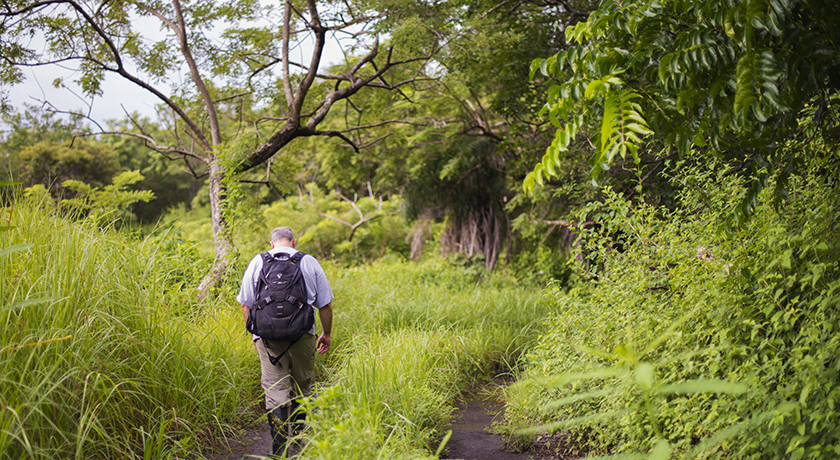
Arturo Sanchez treads the Tropical dry forest trails in Costa Rica.
Arturo Sanchez is a man on a mission. The only Canadian scientist making his way to Morocco for the COP 22 convention (by invitation, no less) is prepped to persuade the policy-making powers-that-be to get engaged in an often-overlooked area. Renowned for his unique work with remote-sensing satellites that monitor the fluctuation of carbon sequestration in tropical dry forests, Sanchez, a professor in Earth and Atmospheric Sciences at the University of Alberta, laments that these environments are often overlooked for a bias toward North American and European contributions to climate change.
"This is an extremely fragile ecosystem. If the trees have lower productivity and drop their leaves sooner and more frequently as we are observing, everyone bites the dust." -Arturo Sanchez
"Tropical dry forests are like the proverbial canary in the coal mine, because they have such strong phenological responses to climate change. Our satellite data shows that the forest productivity is coming down," says Sanchez.
Much like the Canadian boreal forests, tropical dry forests in countries like Costa Rica and Mexico drop their leaves when the rains stop and the soils dry. The predominance of this phenomenon is on the rise, meaning less carbon is being captured by the leaf canopy. Sanchez explains that climate change in the Tropics is evidenced most acutely by drought.
The canary in the coal mine
Dry forests used to represent 60 per cent of all of the forests in the Americas. Today, that number is down to just 40 per cent. Sanchez says that in addition to the bias of looking at developed countries, there is also a bias to look at the effects of climate change on rainforests, including the Amazon.
He cautions that this provides only part of the global picture and misses the strong signals coming out of the dry forests, signals that are captured by systems like the Santa Rosa Environmental Monitoring Super Site located in Costa Rica, four carbon flux monitoring towers operated by the University of Alberta serve as key instruments measuring climate change.
There are 19 capitals in the Americas, and most of them are in dry forests. Add to that the high food production in the areas' fertile soils plus stressors on the water production system from the strong tourist industry, drought is leading to disaster in the region not only from a scientific but also from a societal perspective.
Famine in the forest creates community conflict
"We had the worst drought ever last year in the last 50 years in Central America," says Sanchez. "Not only were more than 100,000 families were forced out of the region, the drought created famine in the forest." Sanchez outlines three effects on the ecosystem: increased carbon levels, decreased water production, and declining biodiversity, all adding up to disastrous impact on ecosystem services.
"This is an extremely fragile ecosystem. If the trees have lower productivity and drop their leaves sooner and more frequently as we are observing, everyone bites the dust."Sanchez explains the impacts are far-reaching, from decreased crop production--something he calls the "salsa crisis" affecting tomatoes, onions, and peppers--to increased mortality rates of spider monkeys and other dry forest-dwellers, to the social conflict created in local communities who are forced into water competition with the tourism industry's demands to supply their hotels and golf courses.
He explains that better management of water resources can lead to conflict resolution but stresses that he is staying out of the political wading pool. "The key element is translating all of these different levels of scientific knowledge into something that policymakers can use. We need to talk about mitigation options absolutely, but my job as a scientist is to provide the most objective information possible to decision makers, and they can take it from there."
Sanchez will be joined by three other scientists: Sophie Nowicki from NASA in the United States, Jochem Marotkze from the Max Planck Institute for Meteorology in Germany, and Irene Schloss from the Instituto Antartico Argentino in Argentina.
A sophomore to the COP scene, Sanchez also presented at COP 20 in Peru in 2014. He says the presentations are what entice people, but things really get interesting in the round table discussions that follow. Sanchez and his three esteemed co-presenters have been asked to provide evaluation of the urgencies coming out of last year's Paris Agreement, which comes into effect on November 4, 2016 with the goal of limiting warming to 2C including an effort to purse 1.5C.